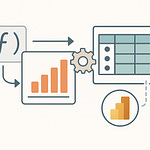If you’re archiving Microsoft Teams calls with the default settings, you’re missing crucial compliance gaps you might not even know exist. Wonder how top enterprises handle legal hold, ultra-accurate transcription, and long-term secure storage—without losing sleep over missed requirements?
Let’s break down the real-world API architecture that takes you beyond basic recordings, so you can confidently defend your data retention and transcription choices in audits.
Where Teams Recordings Fall Short: The Hidden Compliance Gaps
If you’ve ever finished a Teams call and thought, “Good, that’s recorded, so we’re covered,” you’re not alone. The default Teams recording button feels like a security blanket. Someone hits ‘Record,’ everyone gets a little notification, and in most cases, that file shows up in OneDrive or SharePoint soon after. For general meetings—a standard check-in, a project update, maybe a weekly standup—that’s usually enough. You get a playable file, a rough transcript, and the feeling you’re on the right side of IT best practices. It’s easy, fast, and for many organizations, it fits right into the flow: hit record and move on. The illusion of protection is strong because it’s familiar and, on the surface, reliable.
But that sense of safety starts to unravel the minute you need to satisfy regulators or outside legal teams. Imagine your company just received a request from a financial regulator asking to review all meetings with external vendors over the last year. In theory, you just go to your Teams files and pull those recordings. But problems can show up fast. First, not every required participant actually gave clear consent, or maybe the consent wasn’t properly logged. That’s an issue right off the bat in regions with strict privacy laws like GDPR or California’s CCPA. Then you realize some recordings are missing key metadata—maybe there’s no clear record of who exactly attended the meeting, or which roles were present. That meeting you thought was safely archived? Suddenly you have gaps.
It gets worse if you’re in an industry like banking or healthcare, where record retention rules are tight and constantly checked. I’ve watched an organization, thinking they had every box checked, stumble badly during an audit. They couldn’t produce meeting transcripts for conversations flagged as business-critical. Legal hold, which was supposed to lock down these recordings the moment they were made, wasn’t enabled. Some calls had fallen through the cracks because a user moved teams and their OneDrive account was purged. The audit team flagged them for noncompliance, leading to costly remediation steps and some tense calls with the board. You don’t want your company to star in that story.
Transcription may look like a technical checkbox at first, but it’s more like a legal landmine if things go wrong. You might assume Teams' built-in transcripts are good enough, but misspellings, missed speakers, or jumbled dialogue can turn an official record into a liability. If someone disputes what was said, poor-quality transcripts can tip the balance in court or arbitration. And it’s not just about what’s said—metadata matters, too. If a transcript doesn’t tag speaker identities reliably, you can’t always prove who made which statements. Now, think about retention. The default policy isn’t shaped for compliance; it prioritizes user convenience and storage optimization. Files can disappear if a user leaves, changes departments, or IT cleans up unused accounts. This isn’t a hypothetical. About 29% of organizations reportedly fail at least one part of their audit directly due to incomplete or missing conversation records, according to recent compliance surveys from industry analysts.
Offboarding is another blind spot. When an employee leaves or moves between roles, their data—recordings included—often gets wiped after a grace period. There’s no built-in user-friendly alert saying, “Hey, this recording is about to be deleted and may be under legal hold.” The default Teams setup won’t warn you if a critical meeting is about to fall out of reach. If the only person with access has left the organization, IT is suddenly stuck, digging through permission logs and retention settings, hoping the file wasn’t scrubbed weeks ago. It’s a tangle that’s easy to ignore until the stakes are high.
Even the Teams admin center, which looks comprehensive, tends to hide the fine print. There aren’t any big red warning banners about legal hold violations or soon-to-expire transcripts. You get dashboards, compliance scores, and user activity logs, but most risks sit buried a few clicks deep. Unless you go searching, you’d never know your recording library is Swiss cheese from a compliance perspective.
This is why the “just record and relax” mindset is so risky. It’s an easy trap—Teams makes recording simple, but it isn’t built to meet the demands of industries where legal precision and airtight records are non-negotiable. Default setups can work for team projects, internal updates, and non-sensitive materials, but the moment a regulator, legal team, or investigator gets involved, those hidden gaps come roaring into view.
The reality is, basic Teams recordings are great for collaboration—not for compliance. That’s not a design flaw; it’s just not their job. If your company deals with regulatory scrutiny, litigation, or sensitive data, relying on the out-of-the-box setup leaves you exposed. The hidden gaps aren’t just technical—they’re organizational. If you don’t see the holes until you’re mid-audit, it’s already too late.
Here’s the twist: Microsoft already gives you the building blocks to do this right, but hardly anyone uses them fully. It all starts with understanding the compliance recording APIs that sit underneath Teams, quietly making real control possible—when, and only when, you know how to wire them up. Let’s take a closer look at what’s actually available, and why most companies miss it.
Unpacking the API Toolbox: What’s Really Available for Compliance Recording?
If you’ve ever tried to automate Teams recording governance, you already know the pain that comes with searching through Microsoft’s technical docs: there’s a maze of obscure API endpoints, half-documented examples, and permission prompts that seem endless. Each admin who’s tried to navigate this space will tell you—just because something can be recorded on Teams, doesn’t mean it’s easy, or even possible, to make those recordings truly compliant in the eyes of the law. Most admins start by hunting for a one-size-fits-all API, only to discover there’s not a simple “record everything and keep it safe” switch. Instead, Microsoft hands you a handful of specialized tools, and each one comes with a job description, a ton of checkboxes, and its own frustration curve.
First up are the core Teams Recording APIs. These control when and how recordings happen and make it possible to programmatically trigger, manage, or retrieve recordings from scheduled and ad hoc meetings. But these APIs alone won’t give you total control—they’re more like an on/off switch for recording and basic file access. Next, there’s the Compliance Recording Bot. If you work in finance, healthcare, or any sector under regulatory scrutiny, you’ve probably heard about this one. It sits quietly in meetings, recording conversations in real time. Its biggest draw is that it can capture both audio and video streams independently of end-user controls, so even if someone forgets or refuses to hit record, your compliance mandate gets enforced. Then on a different layer is the Microsoft Graph API, which acts like the data courier across the whole Microsoft 365 stack. Within Graph are endpoints not just for pulling files, but for setting legal hold, flagging recordings for eDiscovery, mapping conversation data to participants, and even managing retention programmatically.
None of these APIs are a silver bullet. Take the Compliance Recording Bot as an example: it has to be registered ahead of meetings, permissions need careful handling, and bot failures can leave gaps. It can’t retroactively create compliance where none existed—you can’t go back and “botify” last month’s unrecorded meetings. Legal hold enforcement is handled by a different slice of the API stack. The Graph API’s legal hold endpoints let you mark specific users, chats, or even files for indefinite preservation. That’s how you keep data—even when a user leaves or someone triggers the “delete all my stuff” routine. What most people miss is the subtlety: legal hold at the Graph API level doesn’t just lock files; it locks metadata, too. That covers who was in each call, the timestamps, attendee roles, and even the meeting chat—critical details for compliance teams who need the total picture.
Building a compliance-ready recording pipeline is less like wiring a light switch and more like plumbing a house with hot, cold, and filtered water. Each API acts as a valve or filter. The Teams Recording API gets your base water flow—recordings come in. The Compliance Recording Bot makes sure nothing’s left uncollected. Graph’s legal hold acts as the shutoff; if offboarding or deletion requests come through, data still stays put. Miss one “valve,” and you get leaks—sometimes in the form of missing files, sometimes as lost audit trails or incomplete metadata.
The line between regulated and non-regulated industries gets clear when you look at real-time capture. Financial firms and healthcare orgs often need granular, real-time conversation recording—a level of detail above what you get by snatching up a post-meeting file from someone’s OneDrive. Real-time capture APIs supply the unfiltered audio and video streams as they happen, no post-processing needed, with timestamps that match legal timekeeping standards. On the other hand, basic organizations can often get away with post-meeting recording access, pulling files after the fact if and when they’re needed. This shortcut works for general productivity but falls apart under audit—regulators want to know nothing slipped through the cracks, and they want proof.
Transcription also isn’t a solved problem; Microsoft has APIs devoted to generating transcripts, with optional speaker identification and custom vocabulary models. While these boost accuracy, they bring new issues—transcripts can sometimes stumble on accents, technical jargon, or mixed languages within a single meeting. Speaker identification is a step forward, assigning actual names to voices, but it’s only reliable if your directory and bot setup are tuned correctly. I’ve seen organizations run into issues when a meeting’s transcript mashes three managers into one speaker block, leaving compliance teams to reverse-engineer “who said what” from scratch.
Secure storage rounds out the toolkit. Through Graph API plus compliance configurations, you can set up detailed controls over where recordings live, who can touch them, and which geographies are permitted. There’s more granularity here than most admins realize—encryption at rest, access-logging, multi-region replication, and precise retention policies all sit behind the scenes. This isn’t about ticking a “secure” box. It’s about having credible, trackable evidence that your data hasn’t been tampered with, lost, or accidentally deleted, which often becomes critical years down the line.
So, when you combine these APIs thoughtfully, you actually get a compliance system that’s not just rigid, but flexible and audit-ready. You set up real-time recording, layer on legal hold, crank up transcript quality, and put real teeth behind storage controls. It’s not out of reach—but it does mean piecing each API into your plumbing diagram, testing often, and knowing exactly where your data is at every step. The big question is, how do you stack these parts together for a real-world, end-to-end system? Let’s map that out next.
Blueprint for Bulletproof Compliance: Step-by-Step System Architecture
If you’ve ever been tasked with “making Teams compliant,” chances are you felt buried in API diagrams and feature checklists before ever getting to something that works in the real world. So how does a compliant recording system actually get built—from first click in a meeting to long-term storage years later? Let’s break down what happens at every major architectural layer, because just trapping audio isn’t a guarantee of anything when compliance rides on the outcome.
First, it all starts with the recording trigger. In a basic setup, someone manually hits “Record” in the Teams meeting. In a compliance-focused system, this isn’t left to chance—a bot or policy is set up to trigger recording automatically based on the meeting’s attributes. Maybe every client call, every meeting with certain external domains, or anything involving regulated departments is set to be captured. That’s the foundation. No gaps, no room for someone to just ‘forget.’ Some organizations use directory group membership or calendar attributes as the trigger—any flagged user joins, and the compliance bot jumps in without asking.
With the trigger handled, the next layer is the recording capture itself. The compliance bot—which could be custom-built or from a certified ISV—joins each flagged meeting as a silent participant. These bots tie into Microsoft’s Recording APIs but bring a critical upgrade—they can catch both scheduled and ad hoc calls and don’t rely on a participant pressing the right button. Real-time capture streams audio, video, and sometimes even the chat, directly to designated storage or a processing service. This step has to be rock solid—if the bot glitches out, the session might go unrecorded. That’s not just a blip; that’s an audit finding waiting to happen. So, most mature systems monitor these bots on dashboards, alerting IT or compliance if a bot fails to join or if streams aren’t coming in.
Once data is flowing, it heads for the legal hold pipeline. The moment a meeting’s being recorded under a compliance policy, the files it generates—and all related metadata—are flagged for legal hold via the Graph API. This prevents anyone, intentionally or otherwise, from deleting them, even if the end user is removed or requests erasure. Here’s where policies get layered: organizations often automate legal hold for specific roles or meeting types, scaling this step to thousands of meetings with no manual work. Now, the data not only survives user offboarding, but also integrates tightly with Microsoft Purview and eDiscovery. If your governance team ever needs to search, tag, or export these files for a legal matter, they’re already centrally indexed and locked.
Layer three brings in transcription—and this isn’t the “good enough” transcript you get out of the box. Compliance systems lean on advanced transcription APIs. These run post-processing against the raw audio files from the capture step, using custom dictionaries, speaker recognition, and sometimes additional language models if meetings are multilingual or technically dense. The transcript, plus speaker tags and timestamps, is attached to the meeting record and also put under legal hold, ensuring the text can’t be doctored or removed later. It’s common to see periodic reviews here—compliance teams might spot-check transcripts for accuracy and retrain models if jargon or company-specific terms aren’t picked up well enough.
Secure storage is the backbone that ties the process together. Rather than dumping recordings in a single admin’s OneDrive, mature systems route files to dedicated compliance storage—typically hardened SharePoint sites, Azure Blob Storage, or a third-party vault. Access controls are strict. Only users or apps with defined compliance roles can view or export content, and every access is logged for audit trails. Retention schedules are enforced automatically; some recordings must stay 7 years, others 2, and the system won’t delete early, even if an admin tries. Encryption sounds technical, but it just means you can show a regulator that not only are the files where they should be, they’re protected at rest and during transfers.
The myth is that all this happens by default, but the reality is different. If you miss a layer—the recording bot goes down, the legal hold job skips a batch, the transcription engine leaves speaker tags off, or storage permissions get too loose—the whole chain weakens. Timing is a real risk: if a user changes roles mid-meeting and the automation doesn’t catch it, their call could escape the compliance dragnet. Cross-tenant meetings can cause even more trouble; if your team hosts a regulated meeting with an external vendor, and only one organization’s bot or policies are running, it’s easy for parts of the conversation to end up scattered or—worse—missing. Some organizations use double-bot systems for sensitive cross-tenant calls to guard against this.
A system built this way doesn’t just shrink your audit risk. It gives IT and compliance real tools instead of blind trust. You see which meetings are truly protected, which are at risk, and you can fix holes before an auditor or legal request ever shows up. All the complexity works for you instead of against you—if you get each phase talking to the others and automate what matters. But if you don’t, you’re betting your compliance status on luck, not engineering.
What’s actually at stake if you try to get by with “basic” recording and hope for the best? That’s where you can end up scrambling—sometimes for data that’s already gone, or transcripts that can’t stand up in court. Let’s get into the real-life consequences, and how advanced controls change the game when the pressure is on.
Audit-Proofing Your Data: Legal Hold, Transcription Accuracy, and Secure Storage in Practice
If you’ve ever fielded a legal discovery request, you know the sick feeling when someone needs a year-old Teams recording—only to find it’s gone or the transcript is a jumbled mess. It’s surprisingly common, and it doesn’t matter if that call was routine or mission-critical. What does matter is what your system did with that data when the meeting ended. Legal hold sounds straightforward, but in practice, it’s the spine of any audit-proof data strategy. The checkbox in the admin center is only the surface. Real legal hold means locking not just the audio or video file—but every bit of context: transcripts, attendance, even the meeting chat and metadata. Legal hold is only as strong as its coverage. If your process skips non-standard meetings or fails when people join from different tenants, it becomes a loophole waiting to be found. Compliance teams know this all too well—the system’s only as good as your automation and its ability to tag, lock, and index every conversation as soon as it happens.
But the pain point everyone underestimates is transcription accuracy. Let’s talk through an actual scenario. I watched a public-sector organization face a regulator with hundreds of meetings under question. Their default Teams transcripts had misidentified multiple participants, overruns where twelve minutes of dialogue were missed, and technical jargon reduced to phonetic gibberish. The legal team tried to defend those records, but regulators flagged the lack of speaker identification and missing minutes as evidence gaps. The kicker was a disputed decision—one person said it was never discussed. The faulty transcript left the organization unable to prove who said what. That’s not just a paperwork annoyance; it triggered an official finding, extra investigative work, and in their case, mandatory retraining for technical staff.
That’s where advanced transcription APIs pay their way. Out-of-the-box speech-to-text can trip over heavy accents, industry-specific terms, and conversations that switch between languages. Advanced models, on the other hand, bring speaker separation, custom vocabulary libraries, and support for more dialects. Instead of a generic transcript, you get participant names mapped to timestamped text, with technical terms accurately recognized. Regulators notice the difference immediately. If you’re called to produce evidence, you want to show a transcript that’s not just “mostly right,” but legally defensible. An accurate, detailed transcript can’t fix every problem, but when someone disputes a decision or regulatory body wants to rewind a conversation, it’s often the difference between closing the issue or opening a full investigation.
Secure storage is another area that gets hand-waved, but ask anyone who’s had to restore old recordings after a key person leaves the company. Secure doesn’t just mean using company drives; it means encryption at rest, so nobody gets unauthorized access—ever. Retention controls are hard-coded, guaranteeing that files don’t disappear before policy says so, no matter what offboarding scripts or accidental deletions get triggered. Access logging is non-optional. Regulators, and legal teams, need to see who’s ever touched, exported, or even viewed the data. Combined with deletion protection, this forms a complete chain of custody. When someone requests “proof of deletion” or the original unedited file, you’ve got traceable evidence, not hand-waving and best guesses.
Multi-tenant meetings start out as logistical headaches and finish as compliance puzzles. When participants from multiple organizations join the same call, whose policies govern the data? If only one company’s legal hold or bot is running, half the conversation might be missing from central archives. Handling this means setting up cross-tenant bot participation, coordinating storage systems, and making sure policy enforcement spans both sides. Miss any step and you could lose half a conversation—a blind spot that can sink investigations or leave you exposed if the other org’s logs don’t match your own. Some companies go so far as to export parallel copies to both tenants as soon as the meeting ends, locking each in their own legal hold systems for full coverage.
Now, think about user lifecycle management. When users leave, change departments, or invoke data deletion rights, compliance systems need to react—sometimes immediately. If offboarding scripts wipe meeting data before legal teams get a say, that’s a noncompliance finding. Automation here is critical. The system should alert compliance staff before any deletion, let them review what’s flagged, and automatically preserve everything connected to an open investigation or ongoing retention policy. If you’re relying on manual checks, the odds are stacked against you.
Experts in compliance are blunt about this: automation and policy enforcement can’t be bolted on later as an afterthought. If you leave it up to chance or assume users will hit all the right buttons, you’re asking for audit trouble. The goal is for every piece of data—recordings, transcripts, chat logs, metadata—to be captured and preserved as soon as the meeting ends, regardless of user status changes, privacy requests, or shifting roles. After all, a good compliance system isn’t judged by what works on a calm Tuesday; it’s evaluated on the worst day, when an investigation is on and the pressure is highest.
So, proactive design wins, every time. Systems that treat legal hold, transcription, and secure storage as core pillars are the ones that sail through audits. Those that rely on basic defaults and hope for the best? They usually find out the hard way what’s missing when it matters most. There’s a bigger question here—what does future-ready compliance look like as Microsoft evolves these tools? That’s where serious organizations are already focusing their attention.
Conclusion
If you’re trusting the out-of-box Teams recording for compliance, you’re not alone—but the risks are real and not just theory. Regulators and legal teams want records that survive offboarding, deletion requests, and policy changes. That can’t be accomplished by default storage and hope. Building a compliance-ready system takes more effort upfront, but it means the next audit won’t turn into a scramble for files or a debate over transcript accuracy. If you want less stress when legal walks in, now’s the time to make changes. For more real-world Microsoft 365 guidance, hit subscribe and join the conversation.











